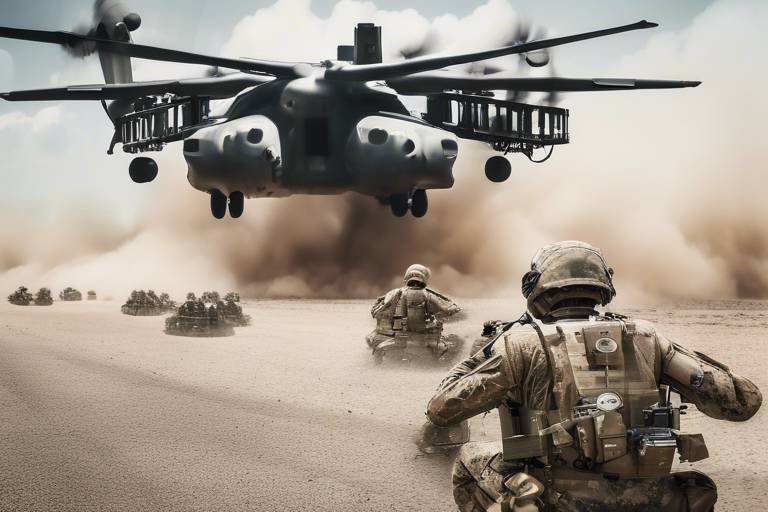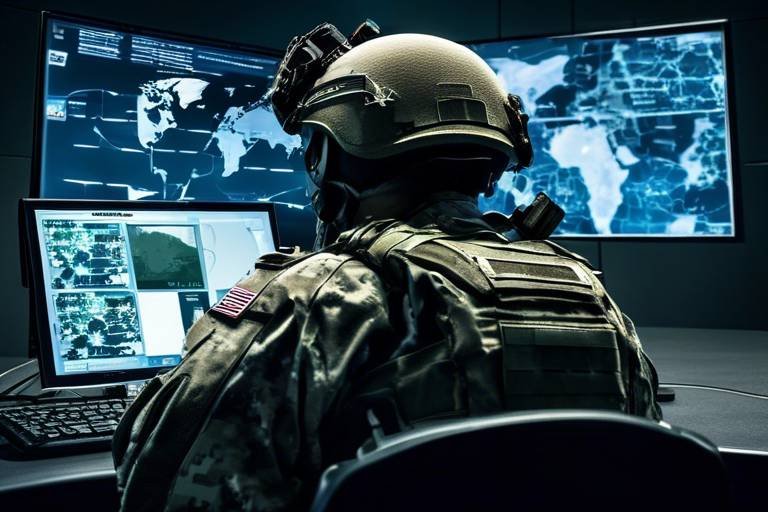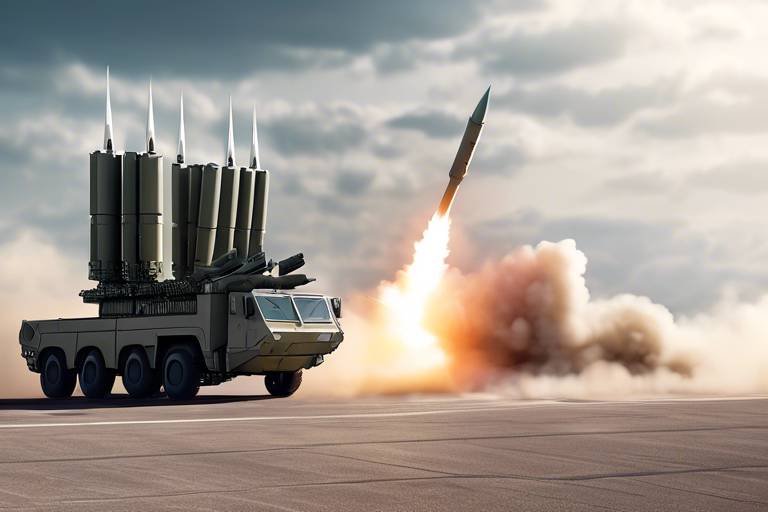The Impact of AI on Military Operational Efficiency
In today's fast-paced world, the integration of artificial intelligence (AI) into military operations is not just a trend; it's a revolution. Imagine a battlefield where decisions are made in the blink of an eye, logistics are flawlessly managed, and threats are detected before they even materialize. This is the new reality brought about by AI technologies. As military forces around the globe embrace these advancements, they are witnessing a dramatic shift in operational efficiency, decision-making, and strategic planning. However, this transformation comes with its own set of challenges and ethical considerations that must be navigated carefully.
One of the most significant impacts of AI is in tactical decision-making. Military leaders are often faced with an overwhelming amount of data during operations. AI systems can analyze this data at lightning speed, offering insights that enhance the decision-making process. Imagine having a trusted advisor that can sift through mountains of information, identifying patterns and suggesting the best course of action. This capability allows commanders to make informed choices on the battlefield, significantly increasing the chances of success.
Another area where AI shines is in logistics and supply chain management. The military operates on a complex network of supply chains, where timing is everything. AI can predict supply needs, manage inventory, and ensure timely delivery of resources. This is crucial for maintaining operational readiness during military campaigns. For example, AI algorithms can forecast demand based on historical data and current trends, ensuring that troops have the necessary supplies when they need them most. The result? Reduced waste, optimized resources, and a more agile military force.
AI technologies are also enhancing surveillance and reconnaissance capabilities. With the ability to process real-time data from drones and sensors, AI enables more effective reconnaissance missions. Imagine a scenario where drones equipped with AI can autonomously scan an area, identifying potential threats and gathering intelligence without human intervention. This not only speeds up the intelligence-gathering process but also reduces risks to personnel. The enhanced situational awareness provided by AI can be the difference between success and failure in critical missions.
Moreover, AI-driven training programs are revolutionizing how military personnel prepare for their roles. These programs offer realistic simulations that adapt to individual learning styles and performance levels. Picture a soldier engaging in a virtual combat scenario where the AI adjusts the difficulty based on their skill level. This personalized approach enhances readiness and ensures that troops are better equipped to handle real-world challenges. The future of military training is not just about rote memorization but about immersive, engaging experiences that prepare individuals for the complexities of modern warfare.
In an age where cyber threats are rampant, AI plays a vital role in military cybersecurity. By detecting threats and analyzing vulnerabilities in real-time, AI systems can respond to cyber-attacks swiftly, safeguarding sensitive information and military systems. Imagine a digital fortress where AI constantly monitors for intrusions, alerting personnel to potential breaches before they can cause harm. This proactive approach to cybersecurity is essential for maintaining the integrity of military operations in a technology-driven world.
The integration of AI into autonomous systems, such as drones and ground vehicles, is transforming combat strategies. These systems can execute precision strikes with minimal human intervention, reducing the risk to personnel in dangerous missions. Think of AI as a skilled marksman, capable of making split-second decisions that enhance mission success while keeping soldiers out of harm's way. This shift towards automation not only improves operational efficiency but also raises important questions about the future of warfare and human involvement in combat scenarios.
AI also facilitates predictive maintenance, a game-changer for military equipment management. By analyzing data from various sensors, AI can forecast equipment failures before they occur. This means that military assets can remain operational, reducing downtime during critical missions. Imagine a scenario where a tank is scheduled for maintenance, but AI predicts a failure in a specific component. The military can address the issue proactively, ensuring that their equipment is always battle-ready.
However, the rise of AI in military operations is not without its challenges. Ethical considerations regarding accountability, decision-making, and the potential for unintended consequences must be addressed. As we hand over more responsibilities to machines, questions arise about who is responsible for their actions. Is it the programmer, the military, or the machine itself? These are complex issues that require careful thought and regulation to ensure that AI is used responsibly in military contexts.
Looking ahead, the military's reliance on AI is expected to grow. Emerging trends focus on enhanced collaboration between human operators and intelligent systems across various operational domains. As technology continues to evolve, we can anticipate even more sophisticated AI applications that will redefine military operations. The future is bright for AI in the military, but it's essential to approach these advancements with caution, ensuring that ethical standards and human oversight remain at the forefront.
- What is the primary benefit of AI in military operations? AI enhances decision-making, operational efficiency, and situational awareness.
- How does AI improve logistics in the military? AI predicts supply needs, manages inventory, and ensures timely delivery of resources.
- What ethical concerns arise from using AI in military settings? Issues include accountability, decision-making processes, and the potential for unintended consequences.
- Will AI replace human soldiers in the future? While AI will augment military capabilities, human oversight will remain crucial in combat scenarios.

AI in Tactical Decision-Making
Artificial Intelligence (AI) is making waves in the military world, particularly when it comes to tactical decision-making. Imagine being on a battlefield where decisions must be made in the blink of an eye. The stakes are high, and the pressure is immense. This is where AI steps in, acting as a powerful ally for military leaders. By analyzing vast amounts of data at lightning speed, AI systems can provide insights that enhance decision-making processes during tactical operations. It's like having a supercharged assistant who can sift through mountains of information and present the most relevant details right when you need them.
Think of a chess game where every move counts. Just as a grandmaster anticipates their opponent's strategies, AI helps military commanders predict enemy movements and assess potential outcomes. This allows leaders to make more informed choices on the battlefield, ultimately leading to better operational success. For instance, AI can analyze real-time data from various sources, including satellite imagery, intelligence reports, and even social media feeds, to give a comprehensive picture of the battlefield dynamics.
Moreover, the integration of AI in tactical decision-making is not just about speed; it's also about accuracy. AI algorithms can identify patterns and trends that may not be immediately obvious to human analysts. This capability is crucial during complex operations where multiple variables are at play. By leveraging machine learning, AI systems can continuously improve their analytical capabilities, adapting to new data and evolving scenarios.
However, it's essential to recognize that while AI can enhance decision-making, it does not replace the human element. Military leaders still play a pivotal role in interpreting AI-generated insights and making final decisions. The collaboration between human intuition and AI's analytical prowess is where the magic happens. This synergy allows for a more robust decision-making framework that combines the best of both worlds.
To illustrate the impact of AI on tactical decision-making, consider the following table that highlights the key benefits:
| Benefit | Description |
|---|---|
| Speed | AI analyzes data in real-time, enabling swift decision-making. |
| Accuracy | Advanced algorithms identify patterns and trends that enhance situational awareness. |
| Predictive Analysis | AI forecasts potential enemy actions, allowing for preemptive strategies. |
| Data Integration | AI consolidates information from various sources for a comprehensive view. |
In conclusion, the role of AI in tactical decision-making is a game-changer for military operations. By harnessing the power of AI, armed forces can improve their situational awareness, make better-informed decisions, and ultimately enhance their operational effectiveness on the battlefield. As we continue to explore the capabilities of AI, it’s clear that this technology will play an increasingly vital role in shaping the future of military strategy.
- How does AI improve decision-making in military operations?
AI processes large volumes of data quickly, providing actionable insights that help military leaders make informed decisions. - Can AI completely replace human decision-makers?
No, AI serves as a tool to assist human leaders, who still play a crucial role in interpreting data and making final decisions. - What are some challenges of using AI in the military?
Challenges include data security, ethical concerns, and the need for human oversight to prevent unintended consequences. - How does AI predict enemy movements?
AI analyzes historical data and real-time intelligence to identify patterns that suggest potential enemy actions.

Enhanced Logistics and Supply Chain Management
In the fast-paced world of military operations, logistics is the backbone that supports every mission. Imagine trying to conduct a military campaign without the right supplies at the right time—it's like trying to run a marathon without water! This is where artificial intelligence steps in, revolutionizing how armed forces manage their logistics and supply chains. With AI, military leaders can predict supply needs with remarkable accuracy, ensuring that troops are always equipped and ready to engage.
AI-driven systems analyze historical data, current inventory levels, and operational requirements to forecast future needs. This predictive capability is not just about having enough resources; it’s about optimizing every aspect of the supply chain. For instance, AI can determine the most efficient routes for transporting supplies, reducing delivery times and costs. By leveraging machine learning algorithms, military logistics can adapt to changing conditions on the ground, much like a skilled chess player anticipating the opponent’s moves.
One of the standout features of AI in logistics is its ability to manage inventory effectively. Traditional methods often rely on manual processes that can be slow and prone to errors. In contrast, AI automates these processes, ensuring that inventory levels are monitored in real-time. This leads to fewer shortages and less waste, which is crucial in maintaining operational readiness. Imagine a scenario where a battalion runs out of essential supplies during a critical mission—this is a risk that AI helps mitigate.
Furthermore, AI enhances collaboration across different military branches. By integrating data from various sources, such as ground units, air support, and naval forces, AI creates a comprehensive view of logistical needs. This interconnectedness allows for a more streamlined approach to supply chain management, where resources can be allocated dynamically based on real-time assessments. It’s like having a well-oiled machine that adjusts its gears automatically to ensure smooth operation.
However, the implementation of AI in logistics is not without its challenges. Data security becomes a paramount concern, as sensitive information regarding supply routes and inventory levels can be vulnerable to cyber threats. Additionally, there’s the challenge of ensuring that personnel are adequately trained to work alongside these advanced systems. Just as a soldier must master their weapon, they must also be adept at using AI tools to enhance their operational effectiveness.
To summarize, the integration of AI into military logistics and supply chain management is a game-changer. It not only increases efficiency and reduces costs but also enhances the overall effectiveness of military operations. As technology continues to evolve, we can expect even more sophisticated AI solutions that will further transform how the military conducts its logistics. The future is bright, and with AI leading the charge, military readiness will reach new heights.
- How does AI improve military logistics? AI enhances military logistics by predicting supply needs, optimizing inventory management, and ensuring timely delivery of resources.
- What are the benefits of using AI in supply chain management? The benefits include increased efficiency, reduced costs, improved accuracy in forecasting, and enhanced collaboration across military branches.
- What challenges does the military face when implementing AI in logistics? Challenges include data security concerns, the need for personnel training, and potential resistance to adopting new technologies.

AI-Driven Surveillance and Reconnaissance
In the ever-evolving landscape of military operations, technologies are proving to be game-changers. Imagine having the ability to process and analyze vast amounts of data in real-time—this is where artificial intelligence steps in, transforming traditional reconnaissance methods into something far more sophisticated and efficient. With AI, military forces can gather intelligence faster than ever before, allowing them to make informed decisions that can mean the difference between success and failure on the battlefield.
One of the most significant advantages of AI in surveillance is its capability to analyze data from multiple sources simultaneously. Drones equipped with AI can process video feeds, satellite imagery, and sensor data to identify potential threats or targets. This rapid analysis allows commanders to respond to situations with unprecedented speed, enhancing their operational effectiveness. For instance, AI can flag unusual patterns in behavior or movement, alerting military personnel to potential enemy activities that might otherwise go unnoticed.
Furthermore, AI enhances the accuracy of reconnaissance missions. By employing advanced algorithms, AI systems can differentiate between various objects and activities, reducing the risk of false positives. This precision is crucial, especially in complex environments where distinguishing between friend and foe is paramount. The integration of machine learning enables these systems to improve over time, learning from past data and experiences to refine their predictive capabilities.
Additionally, the use of AI-powered drones has revolutionized how surveillance is conducted. These autonomous systems can execute missions without direct human intervention, covering vast areas in a fraction of the time it would take traditional methods. They can operate in hostile environments where human presence would be risky or impossible, providing invaluable intelligence without putting lives at risk. Imagine a scenario where a drone can scout a battlefield, collect data, and return with actionable insights—all while remaining undetected.
However, the implementation of AI in surveillance and reconnaissance is not without its challenges. Issues such as data privacy, security, and the ethical implications of autonomous decision-making must be carefully considered. Military leaders need to balance the benefits of enhanced surveillance capabilities with the potential risks associated with reliance on AI technologies. Moreover, as AI systems become more sophisticated, the potential for adversaries to employ countermeasures or exploit vulnerabilities increases, creating a continuous arms race in the realm of military technology.
In conclusion, AI-driven surveillance and reconnaissance are set to redefine military operations. By leveraging advanced technologies to enhance data analysis, improve accuracy, and increase operational efficiency, armed forces can maintain a strategic edge over adversaries. As we look towards the future, the continued integration of AI in these domains will likely lead to even more innovative solutions, ensuring that military operations remain effective in an increasingly complex global landscape.
- What is AI-driven surveillance? AI-driven surveillance refers to the use of artificial intelligence technologies to gather, analyze, and interpret data from various sources for military reconnaissance purposes.
- How does AI improve reconnaissance missions? AI improves reconnaissance missions by processing large amounts of data in real-time, enhancing accuracy, and reducing the risk of human error.
- Are there ethical concerns with AI in military operations? Yes, there are several ethical concerns, including issues related to accountability, privacy, and the potential for unintended consequences in decision-making.
- What role do drones play in AI-driven surveillance? Drones equipped with AI can autonomously conduct surveillance missions, analyze data, and provide intelligence without risking human lives.

Training and Simulation Improvements
In the ever-evolving landscape of military operations, the importance of effective training cannot be overstated. With the integration of artificial intelligence (AI), military training programs are undergoing a significant transformation. Imagine a world where soldiers can engage in realistic training scenarios that adapt to their individual skill levels and learning paces. This is not just a dream; it’s a reality made possible by AI-driven simulation technologies.
AI enhances training by providing a tailored learning experience. Traditional training methods often follow a one-size-fits-all approach, which can leave some soldiers unprepared while others may find the training insufficiently challenging. With AI, training programs can analyze each soldier's performance and adjust the difficulty of scenarios in real-time. This means that if a soldier excels at a particular task, the system can present more complex challenges, ensuring that they are always learning and improving.
Moreover, these AI-based systems can simulate a wide array of combat scenarios, from urban warfare to cyber warfare. This versatility allows military personnel to experience situations they might face in the field without the inherent risks. For instance, a soldier can practice navigating through a simulated city while encountering various threats, all generated by AI algorithms that mimic real-world behaviors. The realism of these simulations prepares soldiers for the unpredictability of actual combat.
Another significant advantage of AI in training is its ability to provide immediate feedback. In traditional training environments, feedback can sometimes be delayed, leading to missed opportunities for improvement. However, AI systems can analyze actions in real-time and offer suggestions for enhancement. This instantaneous feedback loop not only accelerates learning but also fosters a culture of continuous improvement, which is crucial for military readiness.
Additionally, let's not forget about the logistical aspect of training. AI can help in resource allocation, ensuring that training facilities are optimally utilized and that the right equipment is available when needed. This efficiency is vital, especially when considering the costs associated with military training. By predicting resource needs, AI can help military organizations save money while maximizing training effectiveness.
In summary, the integration of AI into military training and simulation is revolutionizing how soldiers prepare for their missions. By offering personalized learning experiences, creating realistic scenarios, providing immediate feedback, and optimizing resource management, AI is paving the way for a more efficient and effective military force. As we look to the future, the potential for AI to further enhance training methodologies is immense, promising a new era of military readiness.
- How does AI improve military training? AI personalizes training experiences, adapts scenarios to individual skill levels, and provides real-time feedback.
- What types of scenarios can be simulated with AI? AI can simulate various combat environments, including urban warfare, cyber warfare, and more, ensuring soldiers are prepared for diverse challenges.
- Can AI training programs save costs? Yes, by optimizing resource allocation and reducing the need for physical training environments, AI can lead to significant cost savings.
- What is the future of AI in military training? The future holds even more advanced simulations, greater integration of AI technologies, and enhanced collaboration between human operators and AI systems.
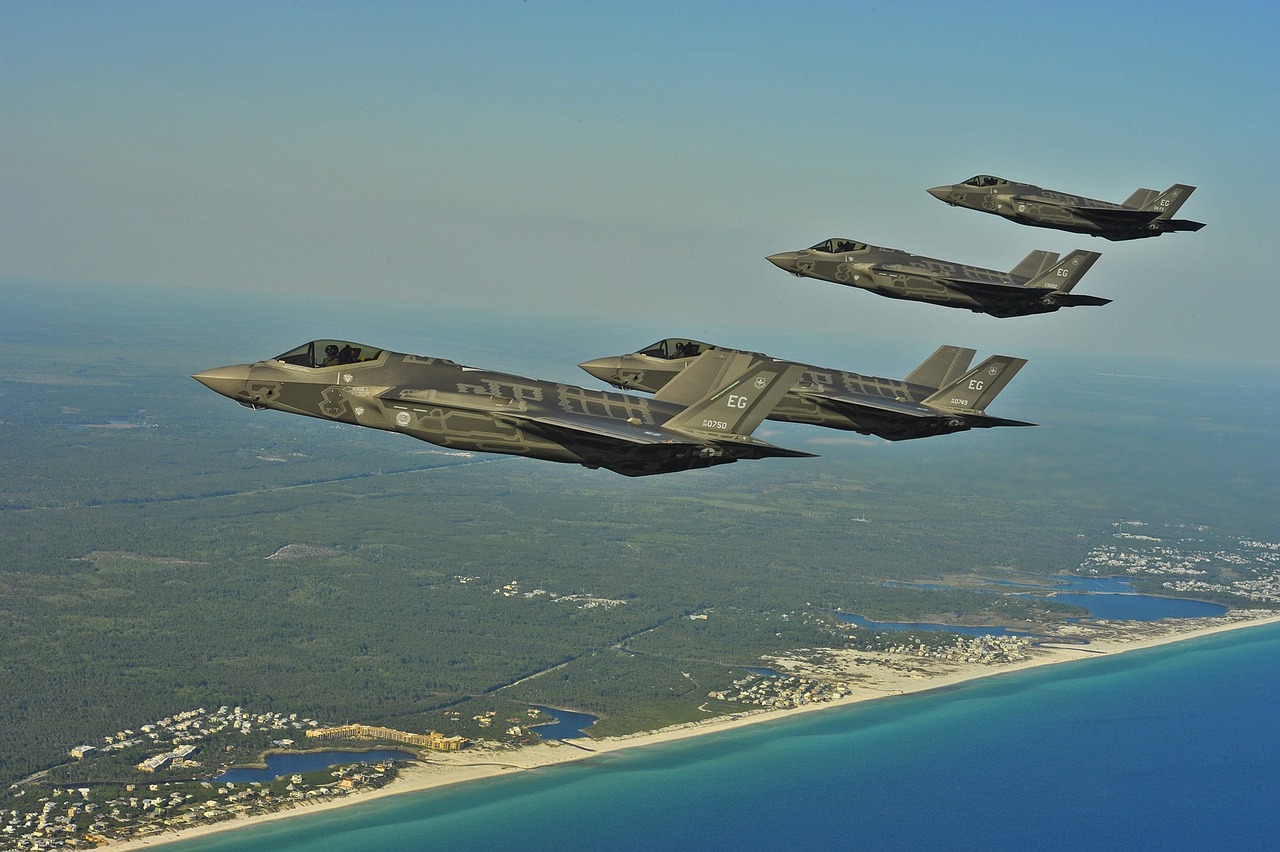
Cybersecurity Enhancements
In today's digital battlefield, cybersecurity is not just an IT concern; it's a fundamental aspect of military strategy. With the increasing reliance on technology, military organizations face a daunting challenge: how to protect sensitive data and systems from ever-evolving cyber threats. Enter artificial intelligence—the game changer that is redefining the landscape of military cybersecurity. By leveraging AI, armed forces can enhance their defenses, making them more robust and responsive to potential attacks.
AI systems are capable of analyzing vast amounts of data at lightning speed, identifying patterns and anomalies that would be nearly impossible for human analysts to detect. This capability is crucial for real-time threat detection. Imagine having a vigilant guardian that never sleeps, constantly monitoring networks for suspicious activities. That’s what AI brings to the table. It can sift through logs, network traffic, and user behaviors, flagging any irregularities that could indicate a cyber intrusion.
Moreover, AI enhances the military's ability to analyze vulnerabilities. By simulating various attack scenarios, AI can help identify weak points in a system before they can be exploited by adversaries. This proactive approach is akin to having a security consultant who not only finds loopholes but also suggests effective measures to patch them up. In a world where every second counts, this predictive capability can mean the difference between thwarting an attack and suffering a catastrophic breach.
Another significant advantage of AI in cybersecurity is its ability to automate responses to threats. When a potential threat is detected, AI systems can initiate predefined protocols to mitigate the risk, such as isolating affected systems, alerting personnel, and even launching countermeasures. This automation not only speeds up the response time but also reduces the cognitive load on human operators, allowing them to focus on more strategic tasks. Think of it as having a highly efficient assistant that handles the mundane while you focus on the bigger picture.
However, the integration of AI into military cybersecurity is not without its challenges. As AI systems become more sophisticated, so too do the tactics used by cybercriminals. This creates a never-ending arms race where military organizations must continuously update and refine their AI algorithms to stay ahead of potential threats. Additionally, there are ethical considerations to address, such as accountability for decisions made by AI systems during a cyber incident. Who is responsible if an automated system makes a mistake? These are questions that military leaders must grapple with as they embrace AI technologies.
In conclusion, the impact of AI on military cybersecurity is profound and multifaceted. From enhancing threat detection to automating responses, AI is revolutionizing how armed forces protect their digital assets. As military organizations continue to adopt these technologies, they must also remain vigilant about the challenges that come with them. The future of military cybersecurity is undoubtedly intertwined with AI, and it’s an exciting yet daunting path ahead.
- How does AI improve military cybersecurity? AI enhances military cybersecurity by enabling real-time threat detection, analyzing vulnerabilities, and automating responses to cyber threats.
- What are the ethical concerns surrounding AI in military operations? Ethical concerns include accountability for AI-driven decisions and the potential for unintended consequences during cyber incidents.
- Can AI completely eliminate cyber threats? While AI significantly enhances cybersecurity measures, it cannot completely eliminate cyber threats due to the evolving nature of cyber warfare.
- What role does AI play in threat analysis? AI plays a crucial role in threat analysis by processing large volumes of data to identify patterns and anomalies that indicate potential threats.
- Is AI in military cybersecurity a new concept? No, the use of AI in military cybersecurity has been evolving for several years, but its capabilities continue to expand as technology advances.
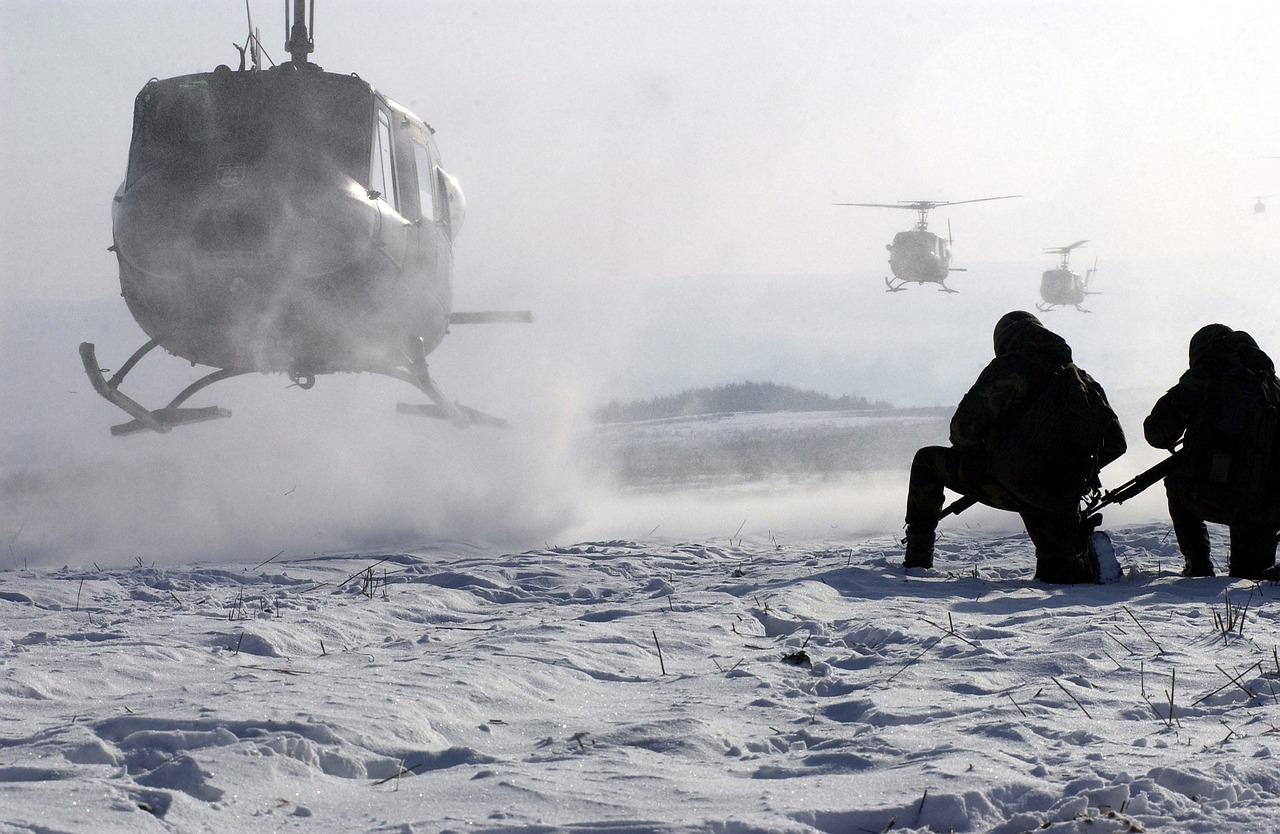
Autonomous Systems in Combat
The rise of autonomous systems in combat is nothing short of revolutionary. Imagine a battlefield where drones, robots, and other unmanned vehicles collaborate seamlessly to execute missions with precision. These technologies are not just enhancing military capabilities; they are redefining the very nature of warfare. With the integration of artificial intelligence, autonomous systems can analyze vast amounts of data and make real-time decisions, allowing for strategies that were previously unimaginable.
One of the most significant advantages of using autonomous systems in combat is the reduction of human risk. Soldiers are often placed in life-threatening situations, but with autonomous drones and vehicles, many of these risks can be mitigated. For example, unmanned aerial vehicles (UAVs) can conduct surveillance and strike missions without putting human pilots in harm's way. This shift not only protects lives but also allows for more aggressive tactics since the fear of casualties is minimized.
Moreover, the precision of these systems is enhanced by AI algorithms that process data from various sensors and sources. This capability allows for target identification and engagement that is far more accurate than traditional methods. Imagine having a team of highly trained soldiers, but instead of relying solely on their instincts and training, they are supported by a network of intelligent machines that can assess the battlefield in real-time. This synergy between humans and machines creates a formidable force.
However, the deployment of autonomous systems is not without its challenges. Ethical concerns arise when machines are given the authority to make life-and-death decisions. Questions about accountability surface: who is responsible if an autonomous drone mistakenly targets civilians? These dilemmas require military leaders and policymakers to tread carefully, ensuring that robust guidelines and oversight mechanisms are in place.
In addition to ethical considerations, there are technical challenges as well. The reliability of autonomous systems in unpredictable environments is a significant concern. While AI can process data rapidly, it is still vulnerable to malfunctions or cyber-attacks. Therefore, rigorous testing and validation are essential to ensure that these systems can operate effectively in the chaos of combat.
As we look to the future, the evolution of autonomous systems in combat is likely to continue at a rapid pace. The military is investing heavily in research and development to enhance these technologies. It’s not just about creating machines that can operate independently; it’s about developing a new paradigm of warfare where humans and intelligent systems work together in harmony. The battlefield of tomorrow may look drastically different, with autonomous systems playing a central role in shaping military strategies and outcomes.
- What are autonomous systems in combat? Autonomous systems refer to unmanned vehicles and drones that can operate independently or with minimal human intervention, often enhanced by artificial intelligence.
- How do autonomous systems reduce risk to soldiers? By deploying drones and unmanned vehicles for surveillance and combat missions, the need for human presence in dangerous situations is significantly lowered.
- What ethical concerns are associated with autonomous combat systems? Key ethical issues include accountability for mistakes made by machines and the moral implications of allowing machines to make life-and-death decisions.
- Are autonomous systems reliable in unpredictable combat environments? While they are designed to operate effectively, challenges remain regarding their reliability, especially in chaotic situations. Continuous testing and improvements are necessary.
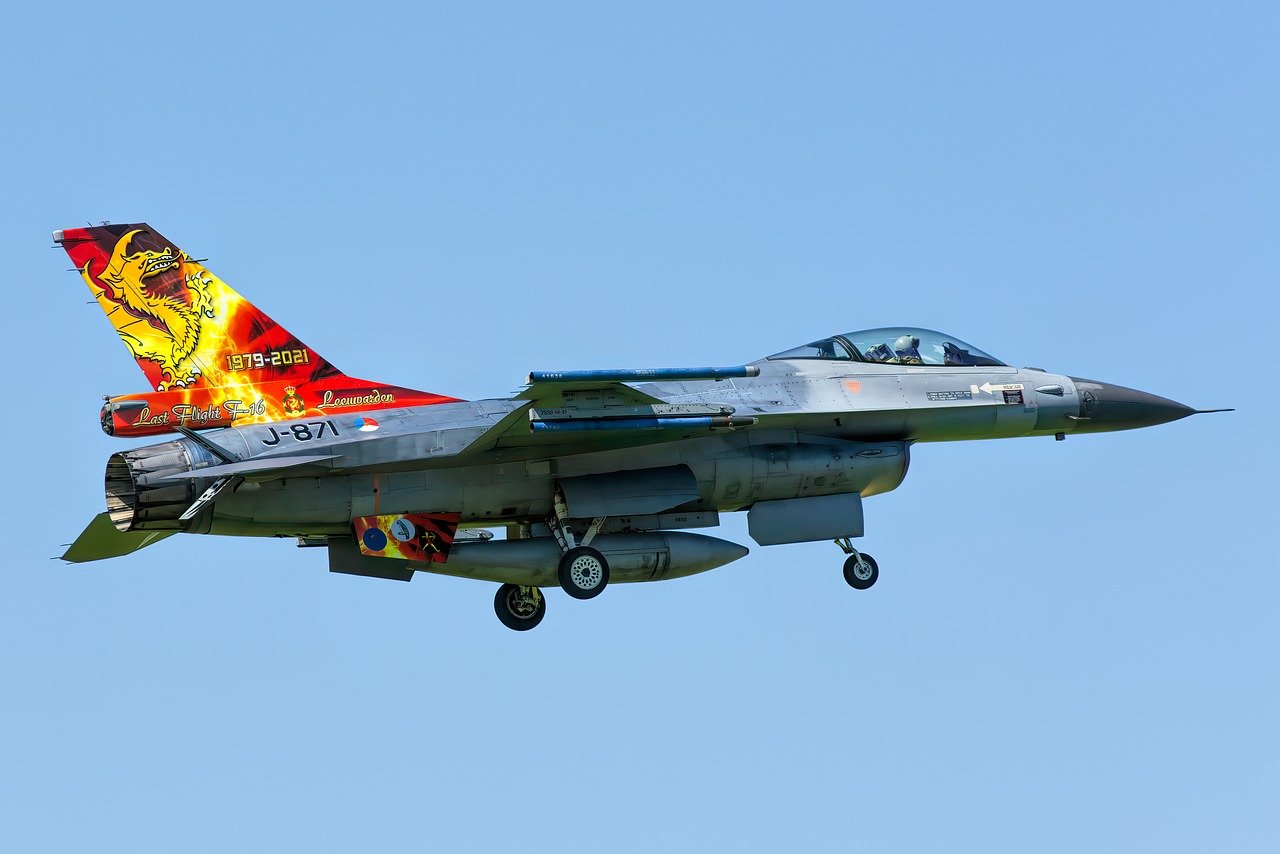
Predictive Maintenance for Equipment
In the fast-paced world of military operations, predictive maintenance has emerged as a game-changer for ensuring that equipment remains operational and ready for action. Imagine a scenario where military assets are always in peak condition, reducing the risk of equipment failure during crucial missions. This is the promise of AI-driven predictive maintenance. By analyzing vast amounts of data collected from equipment sensors, AI systems can forecast potential failures before they occur. This proactive approach not only minimizes downtime but also extends the lifespan of military assets, making them more reliable when they are needed the most.
One of the key benefits of predictive maintenance is its ability to shift the focus from reactive to proactive management. Instead of waiting for a piece of equipment to break down and then scrambling to fix it, military forces can use AI algorithms to monitor the health of their assets continuously. This is akin to having a personal trainer for your equipment—constantly assessing performance and suggesting improvements or repairs before problems escalate. For instance, machine learning models can analyze historical data to identify patterns and anomalies, enabling maintenance teams to schedule repairs at convenient times rather than during critical operations.
To illustrate the effectiveness of predictive maintenance in military applications, consider the following table that outlines the key components and benefits:
| Component | Benefit |
|---|---|
| Data Collection | Continuous monitoring of equipment performance |
| AI Analysis | Forecasting potential failures and maintenance needs |
| Scheduling | Optimizing maintenance schedules to avoid downtime |
| Cost Efficiency | Reducing unnecessary repairs and extending asset lifespan |
Moreover, the integration of AI in predictive maintenance can lead to significant cost savings for military operations. By preventing unexpected breakdowns, forces can avoid the hefty expenses associated with emergency repairs and replacements. This financial efficiency allows for better allocation of resources, keeping budgets intact while enhancing overall operational readiness.
However, it's essential to recognize that implementing predictive maintenance is not without its challenges. The initial investment in technology and training can be substantial, and there may be resistance to change within established military protocols. Yet, as history has shown, embracing innovation often leads to greater success on the battlefield. The key is to foster a culture that values data-driven decision-making and continuous improvement.
As we look to the future, the role of predictive maintenance in military operations is only expected to grow. With advancements in AI technology and data analytics, military forces will be better equipped to maintain their assets, ensuring that they are always ready to respond to threats. In this way, predictive maintenance not only enhances operational efficiency but also plays a crucial role in safeguarding national security.
- What is predictive maintenance? Predictive maintenance is a proactive approach that uses data analysis and AI to predict when equipment will fail, allowing for timely maintenance before issues arise.
- How does AI enhance predictive maintenance? AI enhances predictive maintenance by analyzing large datasets from equipment sensors to identify patterns, forecast failures, and optimize maintenance schedules.
- What are the benefits of predictive maintenance in the military? Benefits include reduced downtime, extended equipment lifespan, cost savings, and improved operational readiness.
- What challenges might arise from implementing predictive maintenance? Challenges can include initial costs, resistance to change, and the need for training personnel on new technologies.
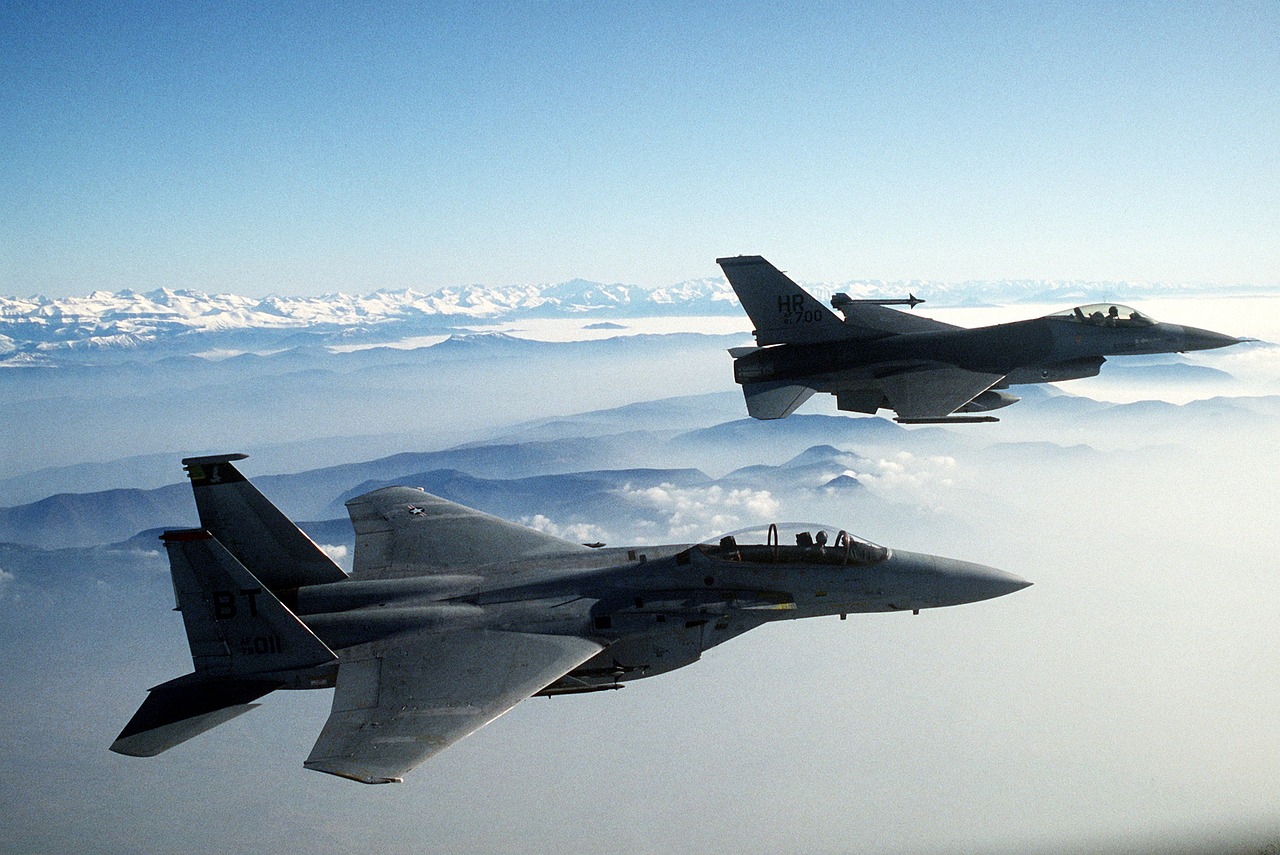
Ethical Considerations in AI Deployment
As we stand on the brink of a new era in military operations, the deployment of artificial intelligence (AI) brings with it a plethora of ethical considerations that cannot be ignored. The integration of AI into military strategies is akin to giving a double-edged sword to a soldier; while it can enhance capabilities, it also poses significant risks. One of the primary concerns is accountability. When AI systems make decisions, especially in high-stakes environments like warfare, who is responsible for those decisions? Is it the programmer, the military leader, or the AI itself? This question becomes even more pressing when considering the potential for autonomous weapons to make life-and-death decisions without human intervention.
Moreover, the potential for unintended consequences is another critical issue. AI systems learn from data, and if that data is biased or flawed, the outcomes can be disastrous. For example, an AI trained on historical military data may inadvertently perpetuate biases that lead to discriminatory targeting or misinterpretation of threats. This raises the question: how do we ensure that AI systems are fair and just in their operations? The military must implement rigorous testing and validation processes to mitigate these risks, ensuring that AI behaves ethically and aligns with international humanitarian laws.
Furthermore, there’s the challenge of transparency. Many AI algorithms operate as “black boxes,” making it difficult to understand how they arrive at their decisions. This lack of transparency can erode trust among military personnel and the public. If soldiers are expected to rely on AI for critical decisions, they must understand how these systems function and the rationale behind their recommendations. This leads to a broader discussion about the need for explainable AI—systems that can provide clear and comprehensible reasoning for their actions.
Another ethical dilemma revolves around the human element in warfare. As we integrate more AI systems, there is a risk that military personnel may become overly reliant on technology, potentially diminishing their critical thinking and decision-making skills. The military must strike a balance between utilizing AI for efficiency and maintaining the essential human oversight needed in complex operational environments. In this context, training programs should not only focus on how to operate AI systems but also emphasize the importance of human judgment and ethics in military operations.
Lastly, the implications of AI deployment extend beyond the battlefield. The use of AI in military operations can influence global power dynamics. Countries that lead in military AI technology may gain significant strategic advantages, potentially leading to an arms race in autonomous weaponry. This scenario raises ethical questions about the global governance of AI technologies and the responsibility of nations to collaborate on establishing international norms and regulations. A cooperative approach may be necessary to prevent an escalation of tensions and ensure that AI is used for peaceful purposes.
In summary, while the integration of AI in military operations offers remarkable potential for enhancing efficiency and effectiveness, it is crucial to navigate the accompanying ethical considerations carefully. Addressing accountability, unintended consequences, transparency, the human element, and global governance will be vital in ensuring that AI serves as a tool for peace rather than a catalyst for conflict.
- What are the main ethical concerns regarding AI in the military?
The main concerns include accountability for decisions made by AI, the potential for unintended consequences due to biased data, the need for transparency in AI operations, the risk of diminishing human judgment, and the implications for global power dynamics.
- How can the military ensure AI systems are fair and just?
By implementing rigorous testing and validation processes, the military can work to identify and mitigate biases in AI systems, ensuring they operate within the bounds of international humanitarian laws.
- What is explainable AI, and why is it important?
Explainable AI refers to AI systems that can provide clear reasoning for their decisions. This transparency is crucial for building trust among military personnel and ensuring informed decision-making.
- How does AI impact human decision-making in military operations?
While AI can enhance operational efficiency, there is a risk that reliance on technology may diminish critical thinking and decision-making skills among military personnel, highlighting the need for balanced training programs.
- What role does international governance play in AI deployment?
International governance is essential to establish norms and regulations around the use of military AI technologies, preventing an arms race and promoting peaceful applications of AI.
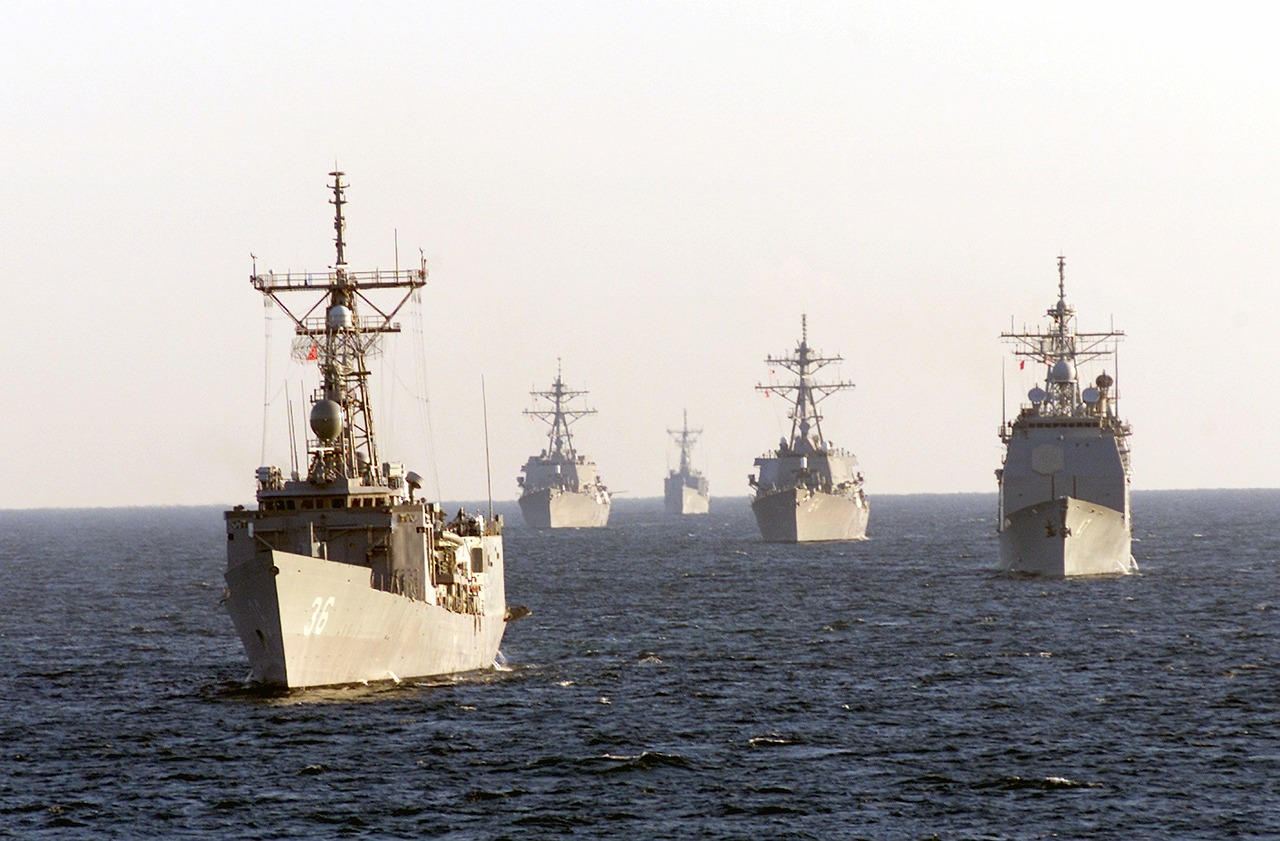
Future Trends in Military AI Integration
This article explores how artificial intelligence is revolutionizing military operations, enhancing efficiency, decision-making, and strategic planning. It highlights both benefits and challenges faced by armed forces in integrating AI technologies.
AI systems assist military leaders by analyzing vast amounts of data quickly, providing insights that enhance decision-making processes during tactical operations. This leads to more informed choices on the battlefield.
Artificial intelligence optimizes logistics by predicting supply needs, managing inventory, and ensuring timely delivery of resources, which is crucial for maintaining operational readiness in military campaigns.
AI technologies improve surveillance capabilities by processing real-time data from drones and sensors, enabling more effective reconnaissance missions and timely intelligence gathering.
AI-based training programs provide realistic simulations for military personnel, enhancing their skills and readiness through adaptive learning techniques tailored to individual needs and performance.
AI plays a vital role in military cybersecurity by detecting threats, analyzing vulnerabilities, and responding to cyber-attacks in real-time, thus safeguarding sensitive information and systems.
The integration of AI in autonomous vehicles and drones transforms combat strategies, allowing for precision strikes and reducing human risk in dangerous missions.
AI facilitates predictive maintenance by analyzing equipment data to forecast failures, ensuring that military assets remain operational and reducing downtime during critical missions.
The use of AI in military operations raises ethical questions regarding accountability, decision-making, and the potential for unintended consequences, necessitating a careful approach to its implementation.
As we gaze into the future, the integration of AI in military operations is poised to evolve dramatically. The military is not just adopting AI; it's embracing a new paradigm that fundamentally changes how operations are conducted. Imagine a battlefield where human intuition and machine intelligence work hand in hand, creating a synergy that enhances both strategy and execution. This collaboration will likely lead to the development of more sophisticated AI systems capable of real-time analysis and predictive modeling.
One of the most exciting trends is the move towards collaborative human-machine teams. These teams will leverage the strengths of both humans and AI, allowing for quicker decision-making and enhanced situational awareness. For instance, AI can process data from various sources, while human operators can apply their judgment to interpret these insights in context. This blend of capabilities is expected to lead to more effective operational planning and execution.
Moreover, the future will likely see an increased focus on interoperability among various AI systems across different branches of the military. This means that air, land, and naval forces will be able to share information seamlessly, enhancing joint operations and improving overall mission success rates. The military is also expected to invest in AI ethics and governance frameworks to address the challenges posed by autonomous systems and ensure responsible use.
Additionally, advancements in machine learning and deep learning will continue to enhance AI capabilities. These technologies will allow military systems to learn from past operations, adapt to new scenarios, and improve over time. As AI becomes more intuitive, it will play a critical role in strategic decision-making, potentially even influencing the outcomes of military engagements.
In summary, the future of military AI integration is bright and full of potential. As technology advances, the military will harness AI to create smarter, more efficient operations that enhance readiness and effectiveness on the battlefield.
- What is the role of AI in military operations?
AI enhances decision-making, logistics, surveillance, training, and cybersecurity, making military operations more efficient and effective. - How does AI improve tactical decision-making?
AI analyzes vast amounts of data quickly, providing actionable insights that help military leaders make informed decisions on the battlefield. - What are the ethical concerns surrounding AI in the military?
Ethical considerations include accountability for AI-driven decisions, the potential for unintended consequences, and the need for responsible implementation. - Will AI replace human soldiers?
AI is intended to assist human operators, enhancing their capabilities rather than replacing them entirely. - How is AI used in logistics and supply chain management?
AI predicts supply needs, manages inventory, and ensures timely delivery of resources, which is crucial for operational readiness.
Frequently Asked Questions
- How is AI improving decision-making in military operations?
AI enhances decision-making by quickly analyzing vast amounts of data, providing military leaders with actionable insights. This allows for more informed choices on the battlefield, reducing the time it takes to respond to dynamic situations.
- What role does AI play in logistics and supply chain management?
AI optimizes logistics by predicting supply needs and managing inventory efficiently. This ensures that military units have the necessary resources when they need them, maintaining operational readiness during campaigns.
- How does AI enhance surveillance and reconnaissance?
AI technologies process real-time data from drones and sensors, improving surveillance capabilities. This leads to more effective reconnaissance missions and timely intelligence gathering, crucial for strategic planning.
- What are the benefits of AI-driven training programs for military personnel?
AI-based training programs offer realistic simulations tailored to individual performance. This adaptive learning approach enhances skills and readiness, preparing personnel for various scenarios they may encounter in the field.
- How does AI contribute to military cybersecurity?
AI plays a vital role in cybersecurity by detecting threats and analyzing vulnerabilities. It enables real-time responses to cyber-attacks, ensuring the protection of sensitive information and military systems.
- What impact do autonomous systems have on combat strategies?
The integration of AI in autonomous vehicles and drones allows for precision strikes while reducing human risk in dangerous missions. This transformation in combat strategies enhances operational effectiveness.
- How does AI facilitate predictive maintenance for military equipment?
AI analyzes equipment data to forecast potential failures, enabling proactive maintenance. This ensures military assets remain operational and reduces downtime, which is critical during missions.
- What ethical considerations arise from AI deployment in the military?
The use of AI raises important ethical questions regarding accountability and decision-making. It's essential to approach AI implementation carefully to mitigate potential unintended consequences.
- What are the future trends in military AI integration?
As technology advances, the military's reliance on AI is expected to increase. Future trends will likely focus on enhancing collaboration between human operators and intelligent systems across various operational domains.

